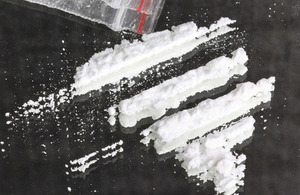Drug treatment performing well but faces big challenges
Drug treatment in England continued to perform well in 2012 to 2013, helping just over 29,000 people to recover from addiction.

According to the latest annual adult statistics released by Public Health England, specialist services remained easy to access for people who need help, with 98% waiting under 3 weeks to get into treatment.
In 2012 to 2013, the overall number of people in treatment continued to fall, as did the number of people starting treatment for heroin and crack cocaine, particularly among younger age groups. These positive trends echo the overall decline in drug use and the move away from the most problematic substances.
However treatment is now facing a series of significant challenges in sustaining this high performance:
-
The treatment population is ageing – the over 40s are now the largest group starting and receiving treatment. Many are older heroin users who have failing health and entrenched addiction problems. This group is particularly hard to help into lasting recovery. The impact is beginning to show in the proportion of people successfully completing treatment, which has levelled off in 2012 to 2013 following an increasing trend over the previous 7 years.
-
While services need to address the demands of this large and complicated group, they also need to adapt and respond effectively to changing patterns in drug use and the needs of the wider population, such as those who get into problems with new psychoactive substances (sometimes called ‘legal highs’) and prescription or over-the-counter medicines.
Public Health England Director of Alcohol and Drugs Rosanna O’Connor said:
Drug misuse is by its nature a highly challenging issue to address and the indications are that the going is getting even tougher for services in meeting the needs of an evolving and increasingly complex treatment population. Local authorities are now responsible for the delivery of treatment in their areas, for ensuring an appropriate response to identified need and continuing to drive recovery in their communities.
However, treatment cannot do it all, so it also involves supporting people who often lack personal resources into lasting recovery by helping them to find work, decent accommodation, and a positive social network such as a mutual aid group. Local authorities are well placed to link together this network of support, working with a range of partners including voluntary and community sector organisations and the NHS.
Drug recovery is essential to keeping our communities healthy and safe and it remains a high priority for government. Public Health England will continue to support local authorities and treatment services with information to help them understand local need, guidance on what works best, practical tools and resources, and bespoke advice.
The national statistics and trends are analysed in the report ‘Drug treatment in England 2012-13’. Key findings include:
- The total number of people in treatment from 2012 to 2013 was 193,575, down from 197,110 from 2011 to 2012 and from a peak of 210,815 from 2008 to 2009.
- The total number starting treatment for heroin or crack cocaine fell from 47,210 in 2011 to 2012, to 45,739 in 2012 to 2013; among the 18 to 24 age group it fell from 4,690 to 3,907 while in the 40+ age group it rose from 12,535 to 13,233.
- The number of people starting treatment for cannabis rose from 10,554 in 2011 to 2012 to 11,280 in 2012 to 2013; for powder cocaine, new cases rose slightly from 7,059 to 7,372 while for mephedrone the number rose from 900 to 1,630.
- 29,025 people successfully completed their treatment programme in 2012 to 2013, down slightly from 29,855 in 2011 to 2012. The proportion of the treatment population completing successfully remained unchanged at 15%; since 2005, 31% of people in treatment have completed successfully and not returned.
- Most people (80%) were in treatment for heroin or crack cocaine, while cannabis was the primary drug for 8% and powder cocaine for 5%.
Notes to editors
- Public Health England’s mission is to protect and improve the nation’s health and to address inequalities through working with national and local government, the NHS, industry and the voluntary and community sector. PHE is an operationally autonomous executive agency of the Department of Health.
- The full statistical materials are available online.
www.gov.uk/phe Follow us on Twitter @PHE_uk